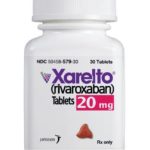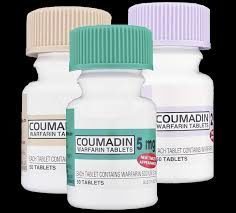

For over 60 years, the treatment of a blood clot in a vein relied on a combination of two drugs, heparin and after a few days, warfarin (Coumadin) therapy. This method of treatment was difficult due to the hard time patients had in using the warfarin, a drug that slowly thins the blood and has numerous other medication and food interactions. In addition, measuring the effect of this drug was dependent on performing blood tests that required regular blood draws. Finally, many medical studies demonstrated that even with careful warfarin management in a clinic, or with an at home blood monitor , patients achieved “periods in the therapeutic range” only 60% of the time.
With the arrival of the newer, more specifically targeted blood thinner drugs like Xeralto and Eliquis and now 7 years of their use, cost vs. benefit issues have become hugely important.
It appears these newer drugs are at least as safe and probably safer than warfarin. They work within 4-6 hours and are as effective as warfarin with periods in the therapeutic range far greater than 60% of the time.
So, why aren’t more of our patients taking these drugs? While there are reasons not to prescribe these new oral blood thinners (artificial heart valve history, kidney problems) I find the biggest issue is price of the medication itself. Many patients tell me their insurance plans make it costly and/or prohibitive for them to be on these medications.
The four studies are predictive models based on both clinical and administrative data and often include cost estimates based on what was quoted in other clinical studies; for example frequency of necessary blood testing and its costs over a year. In other words, these studies do not gather data as it is generated in a clinical setting but rely on probabilities based on data found within other studies. Secondly, many of these studies have been done in other countries (UK, Portugal, Turkey) where the stated cost (in US dollars) of all medications including the new blood thinners are a fraction of what they cost in the US. Finally, and somewhat astoundingly, these published papers were authored by employees of pharmaceutical companies as well as physicians who were paid consultants. Not surprisingly, all four studies stated that the total costs when using the new drugs were equal or cheaper to the total costs incurred over the same time period for the warfarin regimens. So, what to believe?
What I can say is that we do not yet have any good US data to support that the use of the new oral anticoagulant agents is cheaper short term or long term than the standard therapy of heparin followed by warfarin when including the necessary blood tests and costs of managing complications of either drug.
It is unusual that there is not yet a US authored cost comparison study out there. Perhaps it’s because a favorable study showing lower cost with the new drugs is impossible.
In any event, these new anticoagulants are good drugs and I have been surprised how safe they appear to be in my own patients. If the pharmaceutical companies would only reduce prices a bit, I think a whole lot more of these medications would be prescribed.




